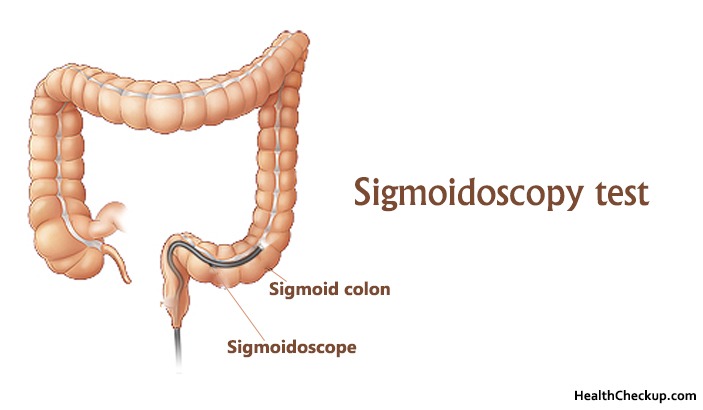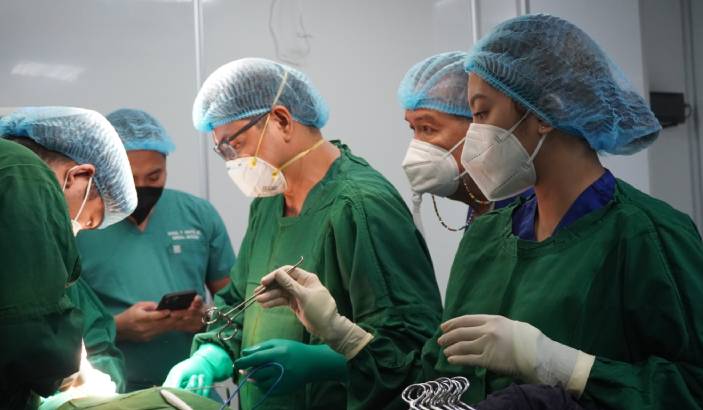Most of us would definitely be frightened of the word Sigmoidoscopy, as it does sound rather frightening. But, you certainly have nothing to fear, as Sigmoidoscopy test is nothing more than a procedure used to see inside the Sigmoid colon and rectum.
All of us know that the colon helps our body to absorb water and nutrients from the food that we eat. It is also the place where the stools are formed. The last part of the descending colon, which is called the sigmoid colon, is connected to the anus by the rectum. A colonoscopy helps the doctor examine the entire colon, but sometimes only the sigmoid colon needs close inspection. That’s when the doctor will recommend a Sigmoidoscopy. Sigmoidoscopy is a procedure used to see inside the sigmoid colon and rectum. The sigmoid colon is the area of the large intestine nearest to the rectum.
There are two types of sigmoidoscopy: a flexible sigmoidoscopy, which uses a flexible endoscope, and a rigid sigmoidoscopy, which uses a rigid device. Flexible sigmoidoscopy is generally the preferred method of examination. While a sigmoidoscopy only examines up to the sigmoid, the most distal part of the colon, a colonoscopy examines the entire large bowel. The sigmoidoscope also contains a tiny video camera at its tip. The camera sends images to an external monitor so that the doctor can study the inside of your colon.
Flexible sigmoidoscopy does not allow the doctor to see the entire colon. As a result, any cancers or polyps farther into the colon cannot be detected with a flexible sigmoidoscopy alone.
How is the Sigmoidoscopy Test Performed?
During the course of the test, you would be asked to lie down on your left side with your knees drawn up to your chest. The doctor, then, gently places a gloved and lubricated finger into your rectum to check for blockages and gently dilates the anus.
Next, the Sigmoidoscope, which is a flexible tube with a camera at its end, is placed through the anus. The Sigmoidoscope is very gently pushed into the colon. Air is passed into the colon to enlarge the area and help the doctor view the area better. This may cause an urge to have a bowel movement or pass gas. A suction pump may be used to remove fluid or stool. The doctor may take out tissue samples with a tiny biopsy tool inserted through the scope.
Children may be given a mild anesthetic to keep them sedated during the procedure.
Why is the Sigmoidoscopy Test Performed?
Your doctor may recommend this test to look for any of the following causes:
- Abdominal pain
- Diarrhea, constipation, or other changes in bowel habits
- Blood, mucus, or pus in the stools
- Unexplained weight loss
- Changes in your bowel habits
Unexplained Weight Loss
These can be signs or indications of various colon diseases, and a sigmoidoscopy might be the best procedure to help determine the cause of these symptoms. A sigmoidoscopy is also used as a general screening tool for colon cancer.
How do you Prepare for the Sigmoidoscopy Test?
You will be given an enema to empty your bowels. This is usually done an hour or so before the sigmoidoscopy procedure. On the morning of the procedure, you will be advised to eat a light breakfast.
If your doctor feels that your entire colon needs to be empty, you will need to prepare even more. You may be asked to follow a clear liquid diet for one to three days before the procedure. You may be given a laxative to help empty your intestines. You may be permitted to have the following liquids:
- Plain coffee or tea
- Water
- Fat-free broth
- Sports drinks with electrolytes
Before the procedure, do tell your doctor about any medical conditions that you have, and all medications and supplements you are taking.
How Will the Test Feel?
During the course of the test, you may feel the following:
- Slight amount of pressure during the digital rectal exam or when the scope is placed in your rectum
- The need or urge to have a bowel movement
- A feeling of bloating or cramping caused by the air or by stretching of the bowel by the Sigmoidoscope
- After the test, your body will pass out the air that was passed into your colon
The entire procedure takes 10 to 20 minutes, and after the test, you can go back and resume your normal activities. But, if you’ve been given anesthesia or sedation, you will need someone to take you home.
Results
- Normal Results: A normal test result will show no problems with the color, texture, and size of the lining of the sigmoid colon, rectal mucosa, rectum, and anus.
- Abnormal Results: Abnormal results can indicate any of the following:
- Anal fissures
- Anorectal abscess
- Blockage of the large intestine
- Cancer
- Colorectal polyps
- Diverticulosis – abnormal pouches on the lining of the intestines
- Hemorrhoids
- Inflammatory bowel disease
- Inflammation or infection
What are the Risks of the Sigmoidoscopy Test?
Though there is a slight risk of bowel perforation – tearing of the wall – and bleeding at the site, the overall risk is very negligible.
Precautions for a Sigmoidoscopy Test
Before a Sigmoidoscopy, be sure to tell your doctor if you:
- Are pregnant
- Have a lung or heart condition
- Are allergic to any medications
- Have diabetes
- Take drugs that may affect blood clotting
What Can You Expect after the Sigmoidoscopy Procedure?
After the exam, you may have a mild abdominal discomfort, and you may feel bloated or pass gas for a few hours after the procedure. Walking may help give relief from any discomfort. You should be able to return to your usual diet and activities almost immediately.
You may also notice a small amount of blood with your first bowel movement after the exam, which is quite normal.
You should call your doctor immediately if you notice any of the following symptoms after the procedure as they could be indications of something serious:
- Severe abdominal pain
- Dizziness
- Bloody stools
- Fever
Medically Reviewed By








